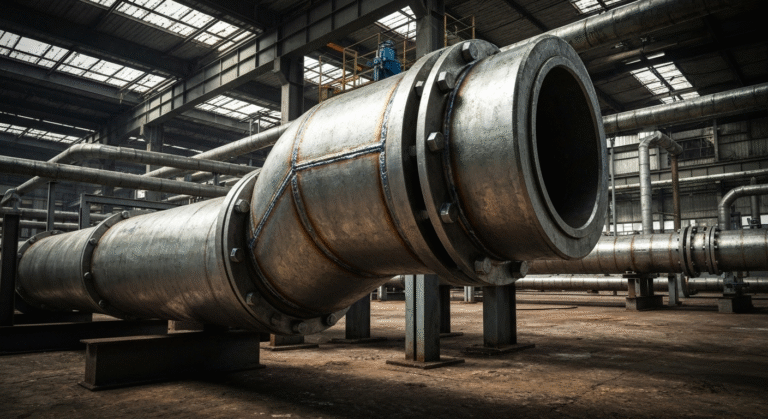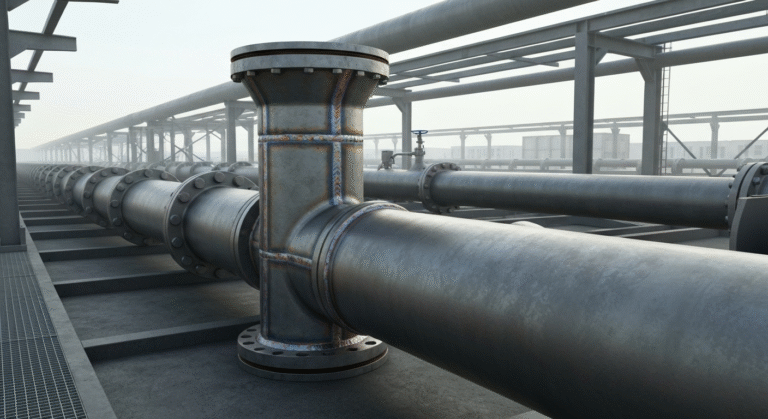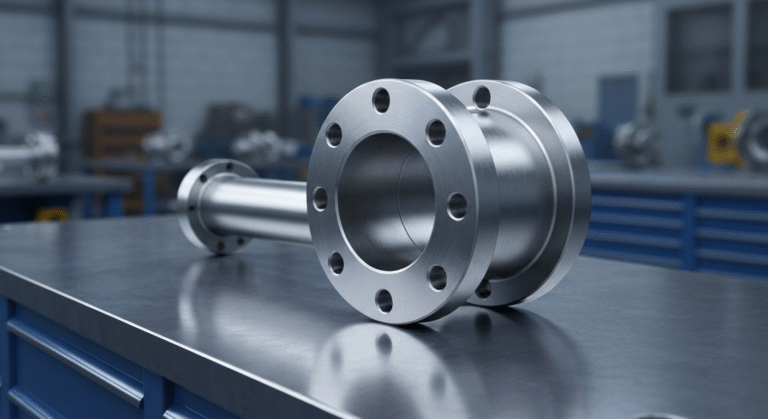-
Industriegebiet Yinzhuang, Kreis Mengcun, Stadt Cangzhou, Provinz Hebei, China
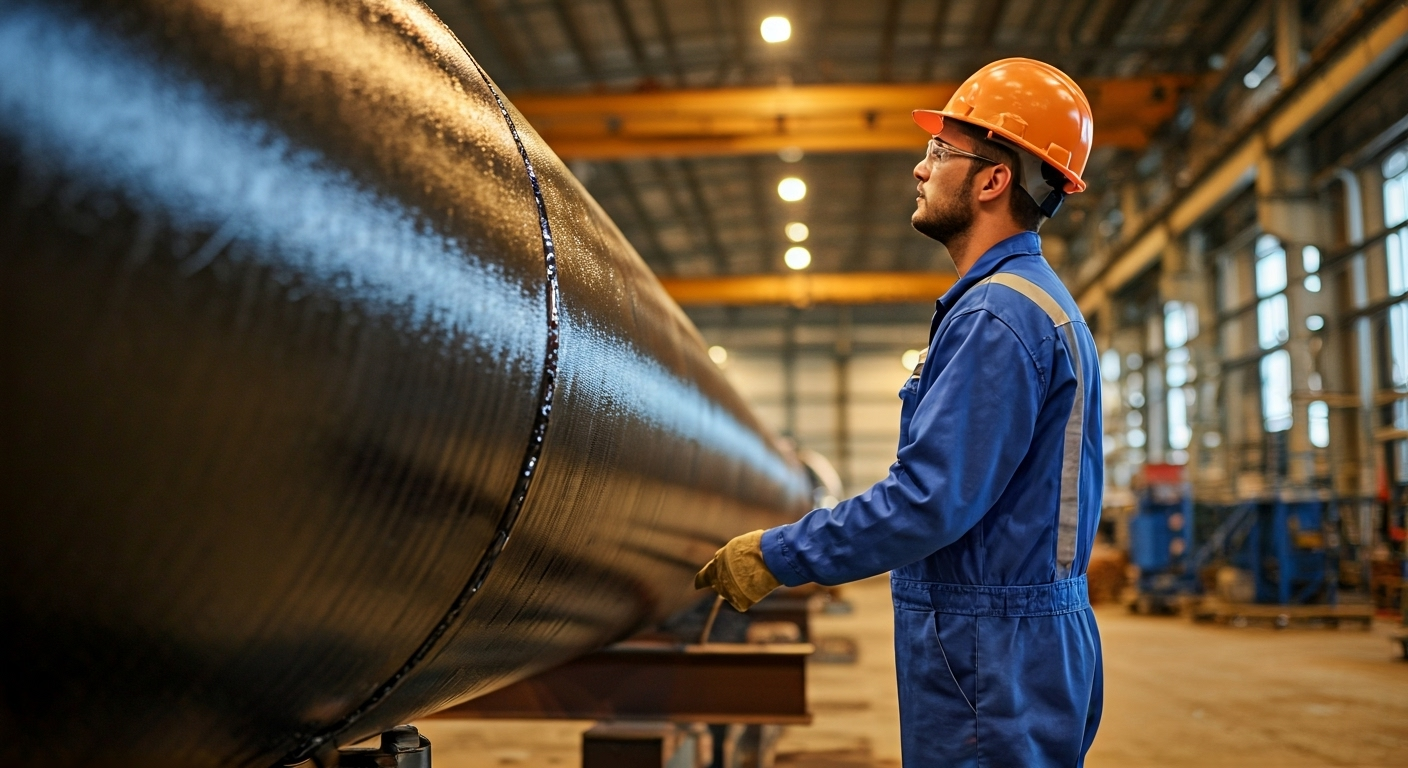
FBE-Rohre: Der ultimative Leitfaden für schmelzgebundene Epoxidbeschichtungen
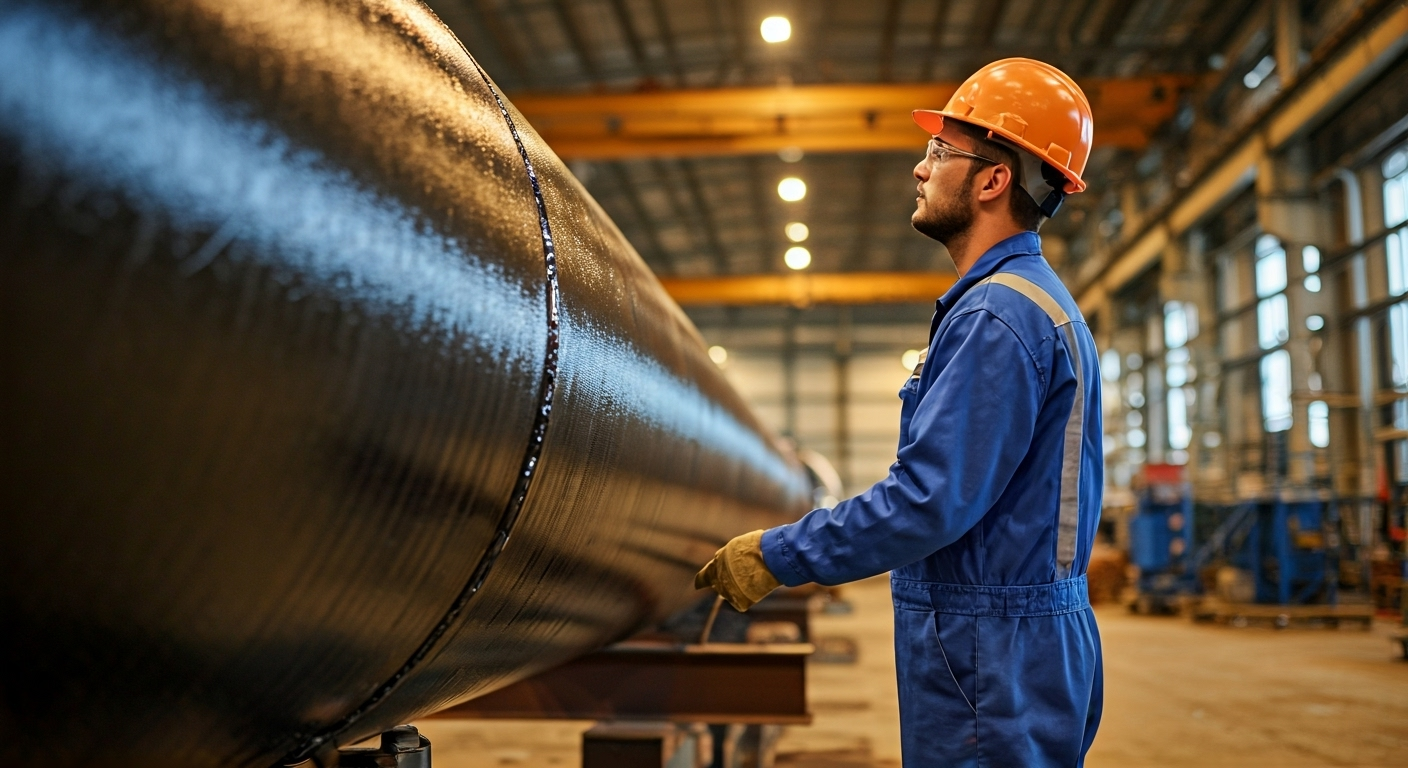
Wichtigste Highlights
- Die FBE-Beschichtung (Fusion Bonded Epoxy) ist eine wärmehärtende Pulverbeschichtung, die für den optimalen Korrosionsschutz von Stahlrohroberflächen in schwierigen Umgebungen entwickelt wurde.
- Das FBE-Beschichtungsverfahren umfasst eine gründliche Oberflächenvorbereitung, das Auftragen von Epoxidpulver und eine präzise Aushärtung, um die Haltbarkeit zu gewährleisten.
- Aufgrund seiner hohen Widerstandsfähigkeit gegen mechanische Beschädigungen, Chemikalien und Abrieb ist es für Pipelines und kritische Infrastrukturen geeignet.
- Die FBE-Beschichtung wird häufig bei Rohrleitungsprojekten eingesetzt, da sie gut haftet und einen langfristigen Korrosionsschutz gewährleistet.
- Es entspricht den Industriestandards und zeigt auch unter schwierigen Bedingungen eine hervorragende Leistung.
- Die umweltfreundliche Ummantelung senkt die Wartungskosten und verhindert kostspielige Rohrleitungsreparaturen.
Einführung
Rohrleitungen und Bauwerke aus Stahl sind vielen Risiken ausgesetzt. Dazu gehören Korrosion, Witterungseinflüsse oder Anschläge. Schmelzgebundene Epoxidharzbeschichtungen (FBE) helfen, diese Probleme zu bekämpfen. Diese Art der Beschichtung besteht aus einem einzigen Teil und wird in Pulverform geliefert. Sie haftet gut auf Stahlteilen und bietet einen starken Korrosionsschutz. Sie eignet sich für schwierige Stellen, wie Öl- und Gasleitungen oder Wassersysteme. Viele Industriezweige verwenden heute FBE-Beschichtungen wegen ihrer Langlebigkeit und Vertrauenswürdigkeit. In den nächsten Abschnitten werden wir mehr über die Eigenschaften, das Verfahren und die Vorteile der Verwendung von Epoxidharz- und FBE-Beschichtungen für den Korrosionsschutz von Rohrleitungen und Bauwerken erfahren.
Was ist eine fusionsgebundene Epoxidharzbeschichtung (FBE)?
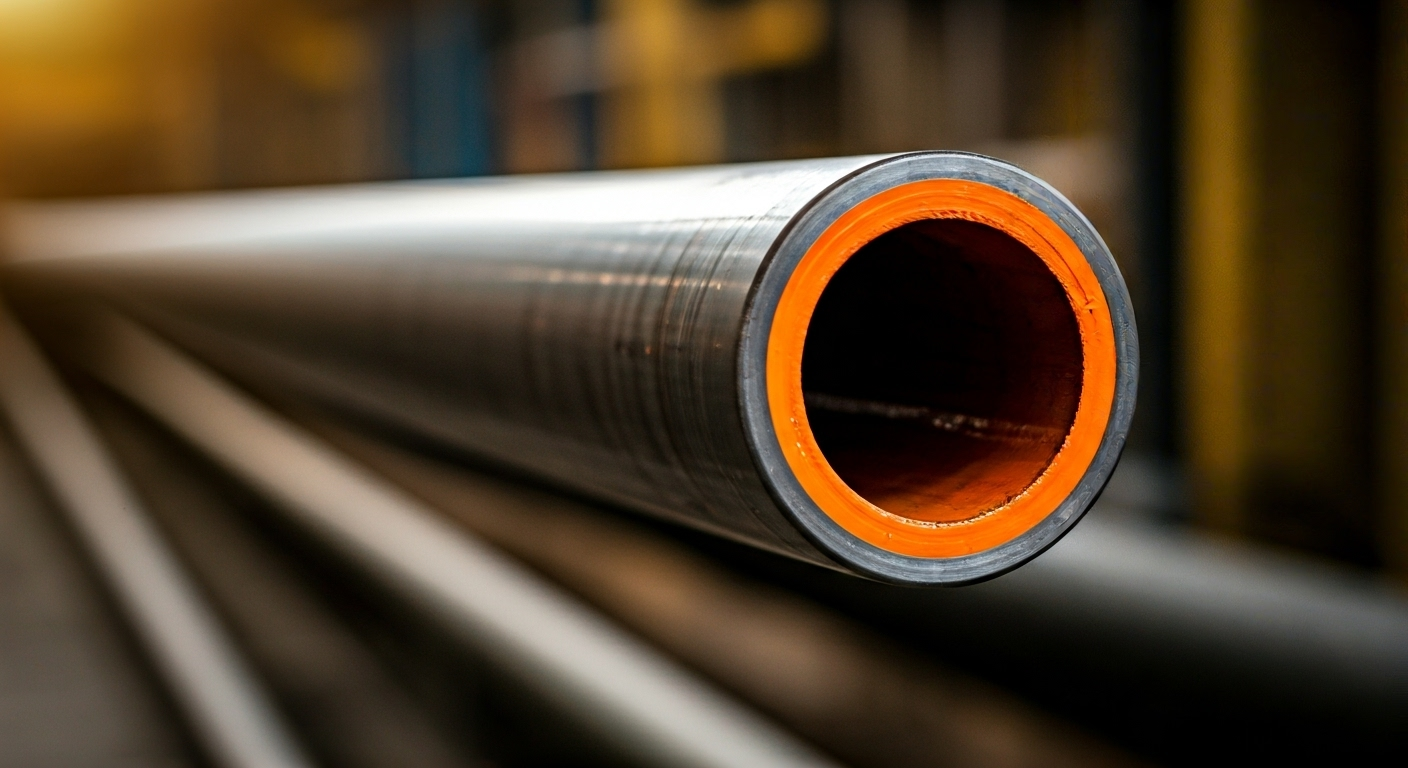
Bei der FBE-Beschichtung (Fusion Bonded Epoxy) wird eine spezielle Art von Epoxidpulver auf Stahloberflächen aufgebracht. Die Beschichtung ist widerstandsfähig und hilft, Korrosion zu verhindern. Sie sorgt dafür, dass Rohrleitungen länger halten. Diese gebundene Epoxidschicht haftet sehr gut auf dem Metall und kann Stößen und vielen Arten von Chemikalien standhalten. Deshalb wird FBE häufig in Öl- und Gasfeldern eingesetzt. Es bietet einen guten Schutz, vor allem wegen seiner starken Haftung und der Haltbarkeit der Beschichtung.
Wichtige Eigenschaften der FBE-Beschichtung
Die Haupteigenschaften der schmelzgebundenen Epoxidharzbeschichtung machen sie zu einer guten Wahl für viele Infrastrukturprojekte. Sie ist bekannt für ihre hohe Abriebfestigkeit, Chemikalienbeständigkeit und ihre Widerstandsfähigkeit bei Schlägen und Kratzern. Das bedeutet, dass die Beschichtung auch unter harten und rauen Bedingungen stabil bleibt. Diese Eigenschaften tragen dazu bei, dass die Pipelines allen Belastungen standhalten, die durch ihre Bewegung oder Handhabung entstehen.
Ein weiterer wichtiger Aspekt der FBE-Beschichtung ist die Kontrolle der Schichtdicke beim Auftragen. Diese gleichmäßige Schicht bietet einen besseren Schutz für die Pipelines. Sie sorgt dafür, dass die Beschichtung auch bei hohem Korrosionsrisiko gut funktioniert. Durch die Kontrolle der Schichtdicke bleiben die Rohre sicher und werden in keiner Weise geschwächt.
Die schmelzgebundene Epoxidbeschichtung haftet auch sehr gut auf Stahl, und diese starke Adhäsion bietet einen lang anhaltenden Korrosionsschutz. Wenn die Beschichtung aushärtet, bildet sie eine starke Verbindung, die verhindert, dass schädliche Stoffe die Stahloberfläche erreichen. Dies trägt dazu bei, dass die Stahlrohre im Laufe der Zeit länger halten. All diese Eigenschaften von schmelzgebundenem Epoxidharz, wie hohe Widerstandsfähigkeit, gute Haftung und gleichmäßige Dicke, machen es sehr nützlich für alle Arbeiten, bei denen Rohrleitungen rauen Bedingungen ausgesetzt sind.
Wie sich FBE von anderen Rohrbeschichtungen unterscheidet
Schmelzgebundene Epoxidharzbeschichtungen unterscheiden sich von Alternativen wie Polyurethan- und Primer-Beschichtungen durch ihr einzigartiges Pulverauftragsverfahren und ihre Beständigkeitseigenschaften. Hier ist eine Aufschlüsselung:
Aspekt | Schmelzgebundenes Epoxid (FBE) | Polyurethan-Beschichtung | Primer-Beschichtung |
|---|---|---|---|
Methode der Anwendung | Pulverbeschichtung auf beheizten Oberflächen | Flüssiger Auftrag mit Rollen/Sprays | Wird als Grundschicht für andere Beschichtungen verwendet |
Widerstandsfähigkeit gegen Abrieb | Hoch | Mäßig | Niedrig |
Haftung auf dem Substrat | Ausgezeichnet | Gut | Abhängig von der Deckschicht |
Aushärtung | Duroplastisch mit Vernetzung bei hohen Temperaturen | Luftgetrocknet | Minimale Aushärtungseigenschaften |
Die besondere Methode von FBE garantiert eine verbesserte Leistung bei mechanischer Beanspruchung. Im Gegensatz zu Grundierungen, die nur als Basisschicht fungieren, ist FBE eine vollwertige Beschichtung, die sich ideal für Rohrleitungen eignet, bei denen es auf eine hohe Haltbarkeit ankommt.
Vorteile der FBE-Rohrbeschichtung in den Vereinigten Staaten
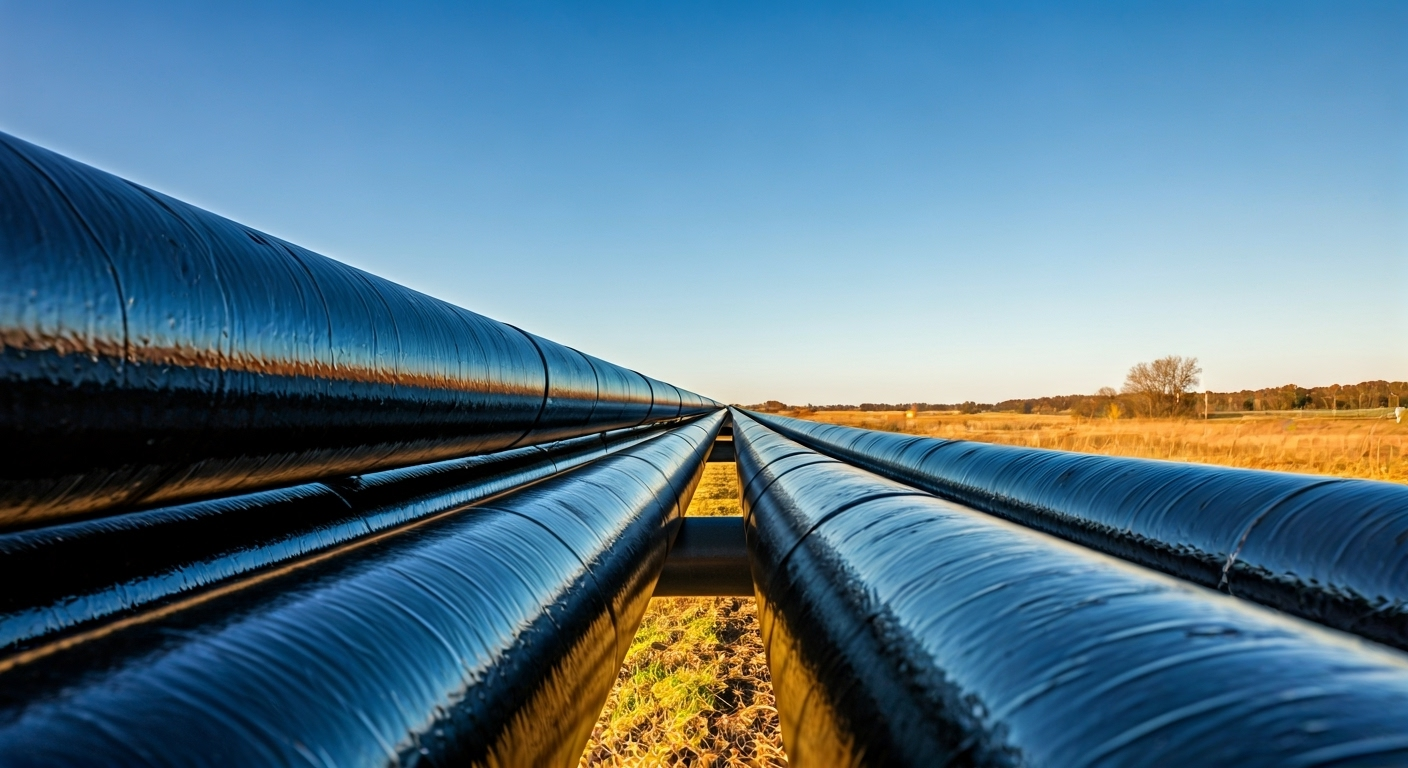
Die Vorteile der FBE-Beschichtung haben sie zur ersten Wahl für Pipelines in den Vereinigten Staaten gemacht. Diese Umhüllung ist ein guter Korrosionsschutz. Außerdem schützt sie die Rohrleitungen vor mechanischen Beschädigungen. So können die Pipelines auch unter schwierigen Bedingungen weiterarbeiten.
Das FBE-Beschichtungssystem sorgt für eine längere Lebensdauer von Stahlkonstruktionen. Das bedeutet, dass Sie weniger Geld für Reparaturen ausgeben müssen. Es trägt auch dazu bei, dass im Falle von Reparaturen weniger verschüttet wird. Das ist besser für die Umwelt. Ganz gleich, ob sich die Pipelines in belebten Städten oder auf weit entfernten Ölfeldern befinden, die Vorteile der FBE-Beschichtung tragen dazu bei, dass die Pipelinenetze im ganzen Land stabil und gut funktionieren.
Korrosionsbeständigkeit und Langlebigkeit
Korrosion ist ein großes Problem für Stahlrohre. Die FBE-Beschichtung bietet jedoch den besten Korrosionsschutz, den man bekommen kann. Sie schützt vor Wasser, Salz und Chemikalien, die Rohre oft beschädigen. So bleibt der Stahl für lange Zeit widerstandsfähig.
Die Lebensdauer von Stahlrohren ist viel länger, wenn FBE verwendet wird. Diese Umhüllung hält rauen Umgebungen problemlos stand. So können Rohrleitungen, die sich im Meer, in trockenen Böden oder an Orten voller Chemikalien befinden, jahrelang ohne Probleme sicher bleiben. Dies trägt dazu bei, dass die Pipelines über eine lange Lebensdauer hinweg funktionieren.
Eine Sache, die die FBE-Beschichtung wirklich gut macht, ist, wie sie sich verhält, wenn sie nur ein wenig beschädigt wird. Selbst wenn sie einen kleinen Kratzer bekommt, blockiert FBE nicht andere Schutzmaßnahmen wie den kathodischen Schutz. Das gibt der Rohrleitung ein zusätzliches Maß an Sicherheit. Aus diesem Grund ist die FBE-Beschichtung die erste Wahl für alle, die wollen, dass ihre Rohrleitungen lange halten und gut funktionieren, egal in welcher Umgebung.
Vorteile für Umwelt und Sicherheit
Schmelzgebundene Epoxidharzbeschichtungen haben klare Vorteile für die Umwelt und die Sicherheit. Das macht sie zu einer beliebten Wahl in vielen Branchen.
- Dank der robusten Bauweise sind weniger regelmäßige Reparaturen erforderlich. Dies verringert den Arbeitsaufwand, verhindert ständige Änderungen in dem Gebiet und spart Ressourcen.
- Da es sich um ein einlagiges System handelt, werden weniger risikobehaftete Materialien verwendet, was mit den Sicherheitsstandards der Industrie übereinstimmt.
- Mit ihrer Fähigkeit, mechanische Schäden und Korrosion zu verhindern, trägt die Epoxidharzbeschichtung dazu bei, die Sicherheit von Rohrleitungen zu gewährleisten. Dies verhindert Lecks und bedeutet, dass die Menschen nicht für kostspielige Reparaturen in Verbindung mit Umweltverschmutzung zahlen müssen.
- FBE verwendet im Beschichtungsprozess keine flüchtigen organischen Verbindungen (VOC). Dies trägt dazu bei, die Menge an schädlichen Gasen zu verringern, die bei der Verwendung der Beschichtung entstehen.
Der starke Fokus von schmelzgebundenem Epoxidharz auf Sicherheit und Umweltschutz trägt dazu bei, dass die Menschen es als eine gute, langlebige Wahl für Beschichtungen ansehen.
Der FBE-Beschichtungsprozess wird erklärt
Mit dem fbe-Beschichtungsverfahren erhalten Sie einen widerstandsfähigen Schutz, der lange Zeit anhält. Alles beginnt mit der Oberflächenvorbereitung. In diesem Schritt wird die Rohroberfläche gereinigt und von Dingen wie Rost und Fett befreit. Dadurch wird ein sauberer Untergrund sichtbar.
Nachdem die Rohroberfläche fertig ist, wird sie erhitzt und die fbe-Beschichtung aufgebracht. In diesem Schritt haften geladene Pulverteilchen am Rohr und bilden eine glatte Schicht. Die Beschichtung wird ausgehärtet, damit sie sich gut mit dem Rohr verbindet. Qualitätskontrollen stellen sicher, dass der Beschichtungsprozess ordnungsgemäß abläuft. Mit dieser fbe-Beschichtung kann das Rohr selbst den härtesten industriellen Bedingungen standhalten.
Oberflächenvorbereitung und Reinigung
Die Oberflächenvorbereitung ist ein wichtiger Teil des fbe-Beschichtungsprozesses. Die Rohroberfläche muss sehr gut gereinigt werden, um Schutt, Rost, Fett und andere Verunreinigungen zu entfernen, die sich auf ihr befinden könnten. Das Strahlen ist die wichtigste Methode für diese Aufgabe. Dadurch erhält der Stahl die nötige Rauheit, damit die Beschichtung gut haften kann.
Nach dem Strahlen überprüfen die Mitarbeiter die Rohroberfläche auf Defekte wie Beulen oder raue Stellen. Sie glätten diese Stellen von Hand. Wenn man dies richtig macht, kann sich die fbe-Beschichtung fest mit dem Rohr verbinden, was zu einer längeren Haltbarkeit und Lebensdauer beiträgt.
Sobald die Oberflächenvorbereitung abgeschlossen ist, wird das Rohr mit Lösungsmitteln gereinigt. In diesem Schritt werden hartnäckige Fett- und Schmutzreste entfernt. Danach ist die Rohroberfläche bereit für das Aufschmelzen des Epoxidpulvers. Die Beschichtung kann nun so aufgetragen werden, dass sie gut auf dem sauberen Rohr haftet.
Anwendung, Aushärtung und Qualitätskontrolle
Die Anwendung von FBE beginnt damit, dass geladene Pulverpartikel auf ein vorgewärmtes Stahlsubstrat gesprüht werden. Diese Partikel schmelzen dann, wenn sie auf die heiße Oberfläche treffen, und es entsteht eine glatte und gleichmäßige Beschichtung. Dieser Schritt ist sehr wichtig, weil er dazu beiträgt, den Stahl vor Korrosion zu schützen, indem er sicherstellt, dass alle Bereiche abgedeckt sind.
Sobald sich das Pulver auf dem Stahl befindet, ist der nächste Schritt das Aushärten. Dabei wird die richtige Menge an Wärme zugeführt, damit die Epoxidbeschichtung eine feste Verbindung mit dem Stahl eingeht. Dieser Aushärtungsprozess trägt dazu bei, dass die Beschichtung besser haftet und ihre schützenden Eigenschaften beibehält. Es ist wichtig, die Hitze und die Dauer der Aushärtung während dieses Schritts zu überwachen, um die beste Beschichtung zu erhalten.
Auch die Qualitätskontrolle spielt eine große Rolle in diesem Prozess. Das Team prüft die Schichtdicke, die Haftung und sucht nach Oberflächenproblemen, um sicherzustellen, dass alle Teile den vorgegebenen Spezifikationen entsprechen. Treten beim Auftragen der Beschichtung oder beim Aushärten Probleme auf, werden sie sofort behoben, damit die Beschichtung zuverlässig bleibt.
Schlussfolgerung
Letztendlich ist das Wissen über FBE-Beschichtungen (Fusion Bonded Epoxy) sehr wichtig für die Industrie, die ihre Rohrleitungen robust und langlebig halten will. FBE-beschichtete Rohre sind in den Vereinigten Staaten die erste Wahl, weil sie einen guten Schutz vor Korrosion bieten und sicher für die Umwelt sind. Der Prozess der FBE-Beschichtung, von der Oberflächenvorbereitung bis zur Qualitätskontrolle, zeigt, wie stark und zuverlässig diese Art der schmelzgebundenen Epoxidbeschichtung sein kann. Wenn Sie FBE-beschichtete Rohre verwenden, erhalten Sie eine lange Lebensdauer und sparen im Laufe der Zeit Geld für Reparaturen. Wenn Sie mit der Verwendung von FBE-Lösungen in Ihren Projekten beginnen möchten, können Sie ein kostenloses Gespräch mit unseren Experten vereinbaren, um zu erfahren, wie wir Ihnen helfen können, die Effizienz Ihrer Rohrleitungen zu verbessern.
Häufig gestellte Fragen
In welchen Branchen werden FBE-beschichtete Rohre in den USA am häufigsten verwendet?
FBE-beschichtete Stahlrohre werden häufig in der Öl- und Gasindustrie verwendet. Viele Menschen verwenden sie auch für den Transport von Wasser und in petrochemischen Anlagen. Diese Rohre bieten einen guten Korrosionsschutz und erfüllen damit wichtige Industrienormen. Deshalb findet man sie in Pipelines, Ventilen und anderen Teilen, die unter rauen Bedingungen arbeiten.
Kann die FBE-Beschichtung bei Beschädigung repariert werden?
Ja, man kann eine schmelzgebundene Epoxidharzbeschichtung reparieren, wenn sie mechanisch beschädigt wird. Dazu wird eine spezielle Epoxidbeschichtung auf die beschädigten Stellen aufgetragen. Mit diesem Flicken wird der Korrosionsschutz wiederhergestellt, so dass die Rohrleitung noch lange Zeit gut funktionieren kann. Die Reparatur sorgt dafür, dass die Epoxidharzbeschichtung weiterhin ihre Aufgabe erfüllt.
Schmelzgebundene Epoxidharzbeschichtungen dienen dem Korrosionsschutz. Wenn Sie kleine beschädigte Stellen mit Epoxidharz ausbessern, stellen Sie sicher, dass der Schutz immer noch stark ist. Auf diese Weise kann Ihre Rohrleitung mehr Nutzen aus der Epoxidharzbeschichtung ziehen und ist vor Problemen wie Rost geschützt.
Wie verhält sich die FBE-Beschichtung bei extremen Temperaturen?
FBE-Beschichtungen eignen sich gut für raue Bedingungen und funktionieren auch bei hohen Temperaturen. Sie behalten ihre Festigkeit und ihren Schutz, auch wenn die Temperaturen steigen und fallen. Dies trägt dazu bei, dass Rohrleitungen und andere Stahlteile auch in rauen Umgebungen lange Zeit sicher bleiben. FBE-Beschichtungen bieten eine gute Möglichkeit, Rohrleitungen unter allen Arten von rauen Bedingungen zu schützen.
Sind FBE-Rohre für Trinkwasseranwendungen geeignet?
Ja, FBE-beschichtete Rohre können für Trinkwassersysteme verwendet werden. Die Epoxid-Pulverbeschichtung entspricht den Industriestandards und ist daher für die Verwendung im Wasserbereich sicher. Diese haltbare und ungiftige Beschichtung verleiht den Rohrleitungen eine starke Schicht, die lange Zeit hält. Außerdem schützt sie die Rohre gut bei Wasserinfrastrukturprojekten.
Welche Normen gelten für FBE-Rohrbeschichtungen in den Vereinigten Staaten?
In den USA gibt es einige Industrienormen, die den Einsatz von FBE-Beschichtungen auf Rohrleitungen regeln. Dazu gehören ISO, API und AWWA. Die Richtlinien tragen dazu bei, dass Epoxidharzbeschichtungen für viele industrielle Anwendungen in guter Qualität und einheitlich eingesetzt werden können. Diese Normen werden verwendet, damit die Beschichtungen stark und zuverlässig sind, denn das ist für alle Rohrleitungen wichtig. Schmelzgebundene Epoxidharzbeschichtungen folgen diesen Industrienormen wie ISO und API, damit Rohrleitungen gut funktionieren und länger halten.
Was ist ein FBE-Rohr und was sind seine Hauptanwendungen?
FBE-Rohre (Fusion Bonded Epoxy Pipe) sind Stahlrohre, die zur Verbesserung der Korrosionsbeständigkeit mit Epoxid beschichtet sind. Zu den wichtigsten Anwendungen gehören der Öl- und Gastransport, Wasserleitungen und industrielle Systeme. Diese Beschichtung sorgt für Haltbarkeit und Langlebigkeit und macht FBE-Rohre ideal für raue Umgebungsbedingungen.
